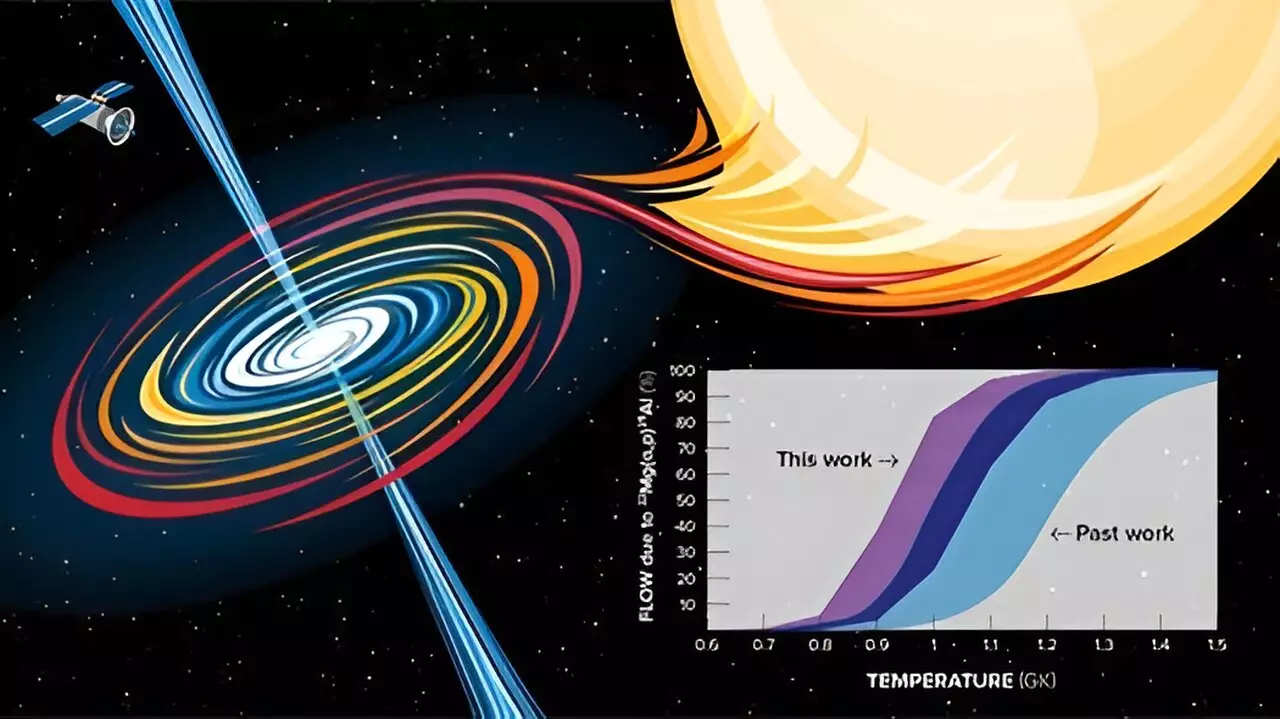X-ray bursts (XRBs) are explosive events that take place on the surface of a neutron star when it absorbs material from a neighboring star. These bursts lead to a chain of thermonuclear reactions that result in the creation of heavy chemical elements. One particular reaction, 22Mg(α,p)25Al, has recently been studied and found to play a crucial role in shaping our models of XRBs. This reaction involves magnesium-22 and helium-4 producing a proton and aluminum-25, and its rate has been discovered to be significantly higher than previously thought.
The rate of the 22Mg(α,p)25Al reaction is essential for understanding the mechanisms behind XRBs and the synthesis of elements within these explosive events. By studying how unstable nuclei interact with protons and alpha particles, researchers can gain insights into the processes that drive XRBs. It has been observed that certain nuclear reactions slow down at “waiting points,” such as magnesium-22, where protons are captured before further reactions can take place. Identifying alternative reactions, like the capture of alpha particles, can help bypass these waiting points and continue the creation of heavier elements.
To measure the 22Mg(α,p)25Al reaction, scientists utilized the Argonne Tandem Linac Accelerator System (ATLAS), a facility at Argonne National Laboratory. By performing the measurement in inverse kinematics, researchers were able to study the reaction in detail. They created an in-flight radioactive beam using the ATLAS system, which was then directed to a detector filled with helium gas to replicate conditions seen in XRBs. The results of the experiment revealed a four-fold increase in the probability of the reaction occurring, indicating a higher likelihood of bypassing the waiting point at magnesium-22.
The new findings shed light on the behavior of nucleosynthesis reactions in XRBs, particularly at crucial points like the magnesium-22 waiting point. By understanding the intricacies of these reactions, scientists can refine their models and improve our knowledge of how heavy elements are formed in cosmic events like X-ray bursts. Additionally, the discovery that the reaction commences at lower temperatures than previously believed challenges existing assumptions about the conditions required for nucleosynthesis to occur efficiently.
The study of reactions like 22Mg(α,p)25Al in X-ray bursts offers valuable insights into the fundamental processes underlying the synthesis of heavy elements in the universe. By refining our understanding of these reactions, we can enhance our models of cosmic phenomena and deepen our knowledge of the origins of the elements that make up the world around us.


Leave a Reply